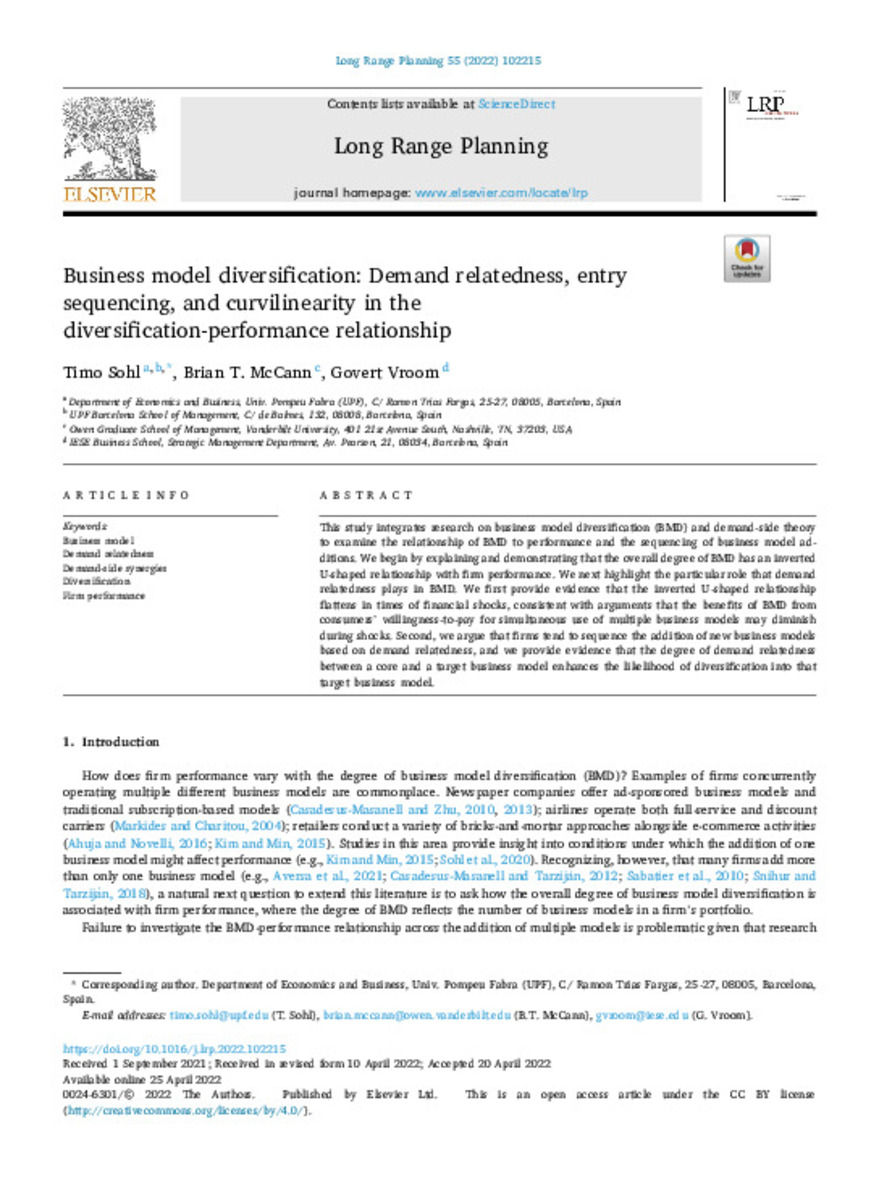Business model diversification. Demand relatedness, entry sequencing, and curvilinearity in the diversification-performance relationship
Keywords:
Business model
Demand relatedness
Demand-side synergies
Diversification
Firm performance
Citation:
Timo Sohl, Brian T. McCann, Govert Vroom, Business model diversification: Demand relatedness, entry sequencing, and curvilinearity in the diversification-performance relationship, Long Range Planning, Volume 55, Issue 6, 2022, 102215, ISSN 0024-6301, https://doi.org/10.1016/j.lrp.2022.102215.
Statistics and impact
0 citas en

0 citas en

Items in Dadun are protected by copyright, with all rights reserved, unless otherwise indicated.







